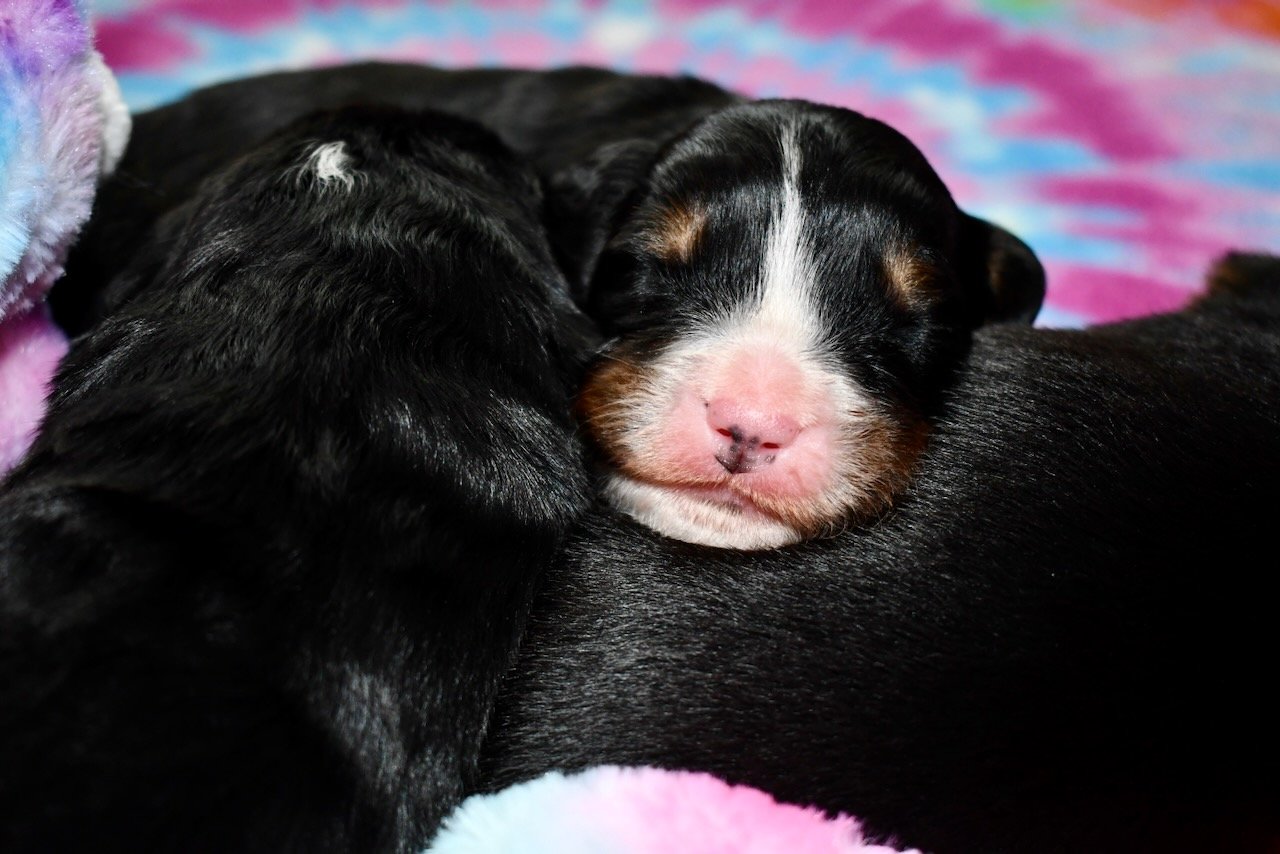Lincoln, age 6, is a busy small human who tends to grab first and think later. This propensity to grab is very helpful at Costco because he is great at Grab Missions.
“Grab two cottage cheeses,” I can tell him — and off he goes, weaving between other shoppers to happily grab two cottages cheeses.
Like any personality trait, grabbiness has some real advantages.
But being grabby with puppies is not a good plan. Here is how I explained it to Lincoln:
“A baby puppy is the perfect size for a hawk to have for dinner. When a hawk swoops in and grabs the puppy, it is a fast snatch and the puppy dangles as he is flown away to be eaten 😬 So when we grab a puppy suddenly, it scares them because they think they have been snatched up by a hawk. You can tell it is scary for the puppy because they cry and get upset in their body.
When we pick up puppies, we have to do it in a way that lets the puppy know we are not a hawk. This means we are slow and gentle, and support their whole body.”
Lincoln got it. He moved in slow motion when picking up puppies while telling them out loud, “not a hawk, not a hawk.”
Sapphire, Star Garnet, and Topaz
I know there are still those who do not understand that intentionally stressing out puppies is a Bad Idea. There are even programs that people follow to stress puppies 🤯 These are not evidence-based, FYI.
This is three puppies in one photo — Star Garnet’s face, Sapphire’s paw, and Topaz’s body as the pillow.
Stress does not make a baby more resilient — it just makes them stressed and anxious. Puppies and human babies develop resilience from a place of safety and security — not from a series of small “t” traumas.
Topaz
My goal is to offer the puppies environments and experiences that are developmentally appropriate in order to generate opportunities for mastery. It is mastery — not stress — that develops confidence and resilience.
Sapphire — now double his birth weight!
To experience mastery, the puppy — or human baby — needs to be able to comfortably accomplish a task and/or exist in an environment with a feeling of safety.
I worry that people may not be accurately assessing the difference between mastering a challenging stressor and the creation of learned helplessness. A puppy that stops responding to an inescapable stressor is not adapting — they are shutting down.
Jasper
When we generate stress in a puppy that they cannot escape from and/or master, we are likely to activate a “freeze” response in the puppy. One of these puppies will be my next working dog — the last thing I want is a dog who has been hard wired to shut down in the face of stress!
I want a dog who experiences stress with a “Game On” attitude, knowing they can master the challenge. That starts early — in the whelping box — and so the challenges these puppies face must be ones they can master.
Jasper — in a SIT! ⭐️
Bad things will happen to all of us — including puppies — because we exist in an imperfect world. There is no need to intentionally be a hawk.
❤️
An example of a developmentally appropriate challenge. Note the reward for mastery 🥛
A Few End of Day Photos
Jasper
Star Garnet
🩷
Star Garnet
This isn’t the clearest photo but you can see that Sapphire is making credible attempts to stand up.
And the sealed eyes are getting less sealed — I bet we start to see bits of eyeballs in a day or two 👀
🩷💙💙💙











